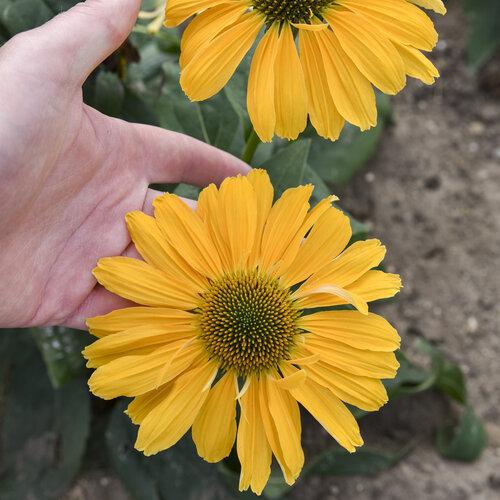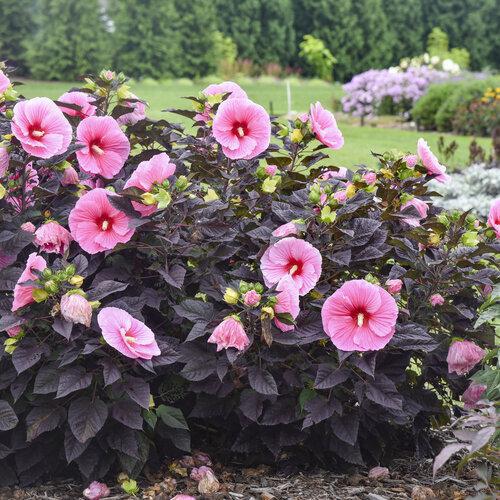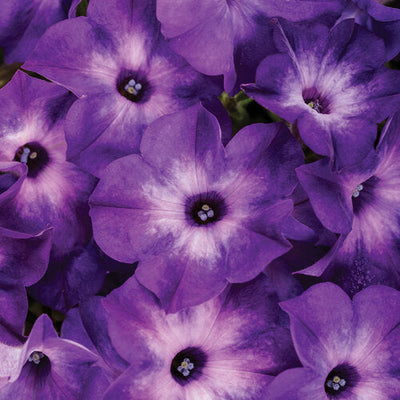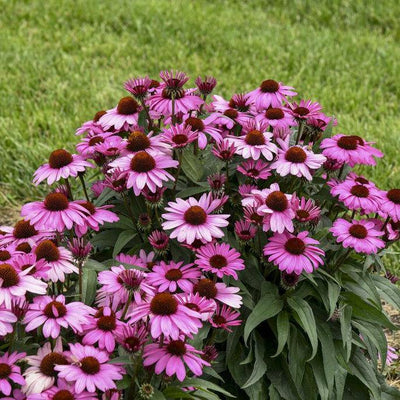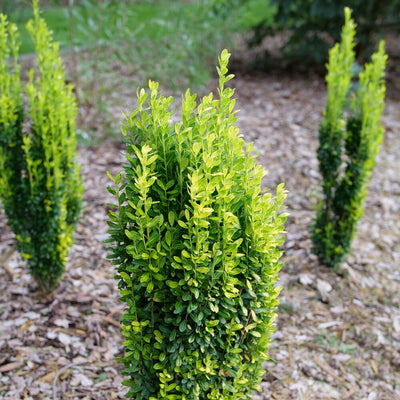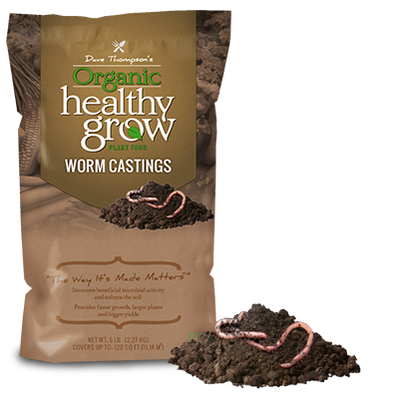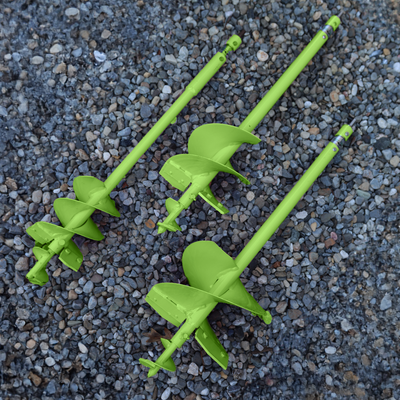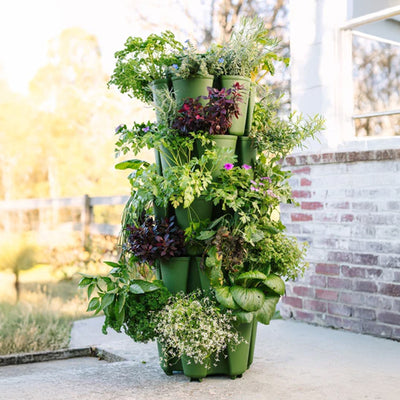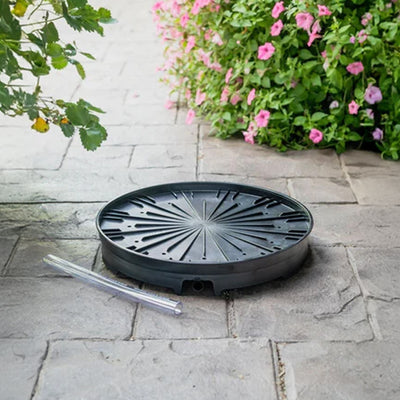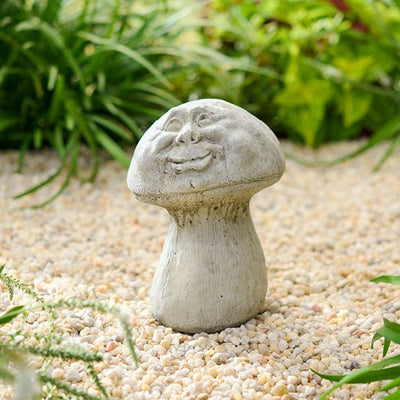Creating An Elegant Evergreen Privacy Screen: Southern Style
Video Transcript
Hey friends, welcome to Gardening with Creekside. Today, we have a very fun task ahead of us. We are planting some massive trees here at what I have always affectionately called The Wedding Nook. It is going to come to fruition this coming May because this is the area that Alyssa is getting married. Now, to give you a little bit of a frame of reference because this is kind of maybe a different spot than what y'all are used to, so I just want, I'm going to try to put it in perspective here. Here we go. So I'm going to flip the camera around. I am actually standing on the other side of the creek from the nursery. Obviously, you can see the barn, the signature Garden is right here. Obviously, the greenhouse and shrub lot. So the wedding Nook, as I have called it for years and years and years because I always kind of envision this happening here, is this natural area, a Nook in the meadow that is surrounded by the creek because the creek comes down and does a loop all the way around right here, and this little area right here is a protected area. You don't see it if you're standing there at the shrub lot or if you're standing at the barn, the nursery. You really don't know that this area exists. It is that little secret milk area.
What we're going to do and what we have done and what we're doing is removed all of what I call like the junk trees, the trash trees. These are all natural trees that have grown here. They have never been planted. Nothing has been planted here. These are all volunteers. Obviously, we have some massive, gorgeous, stunning tulip poppers that are just lovely and gnarly like this one I showed you to you the other day when we planted the Midnight Express Red Bud, which is just right there. But it's really fun because these trees are literally growing on the creek bank, and you can see all of their really fun gnarly roots that are just hanging out right here. All the trees really kind of do that through this area. You can see right here the ceremony for Alyssa and Nick is going to take place right here. Alyssa and Nick basically are going to stand here, and then the guest will sit here, but they're going to be facing this way. Okay, gives you an idea when we were looking, and uh, this whole little area was just an absolute mess from the perspective of the trees that were growing here, crossing the creek, trying not to fall here. Um, and what I wanted to do was remove all of those junky trees, scraggly. They were really like thin, scraggly trees, whether it was a pine, Cedar, tons of briers are in there, um, some grapevine, all of that. So now here we are back on the nursery side of the creek and envision that Nick and Alyssa are standing here with guests looking in this direction. Removed all of the scraggly stuff from the massive poplar all the way over to the next popper. Well, clearly, we don't want to leave that, right? We want to have a beautiful dark evergreen screen back there. So we got some Thuja Green Giants and some Bracken's Brown Beauty Magnolias, beautiful Chamaes, some October Magic Orchid. Pretty sure that was Orchid Rose, Chamaes. And that is what Jerry is bringing over right now. I wanted this screen to be evergreen so that no matter what time of year it is, you're going to have a really nice, um, lush, dense evergreen screen back here that hides, you know, the road because this is the entrance to the nursery. It is just right here. So the gate is right there, and then the road coming down to the nursery is here, and then the road to production runs the whole length. So Jerry and Andrew grabbed the Chamaes, so let's head over there and look at those Chamaes. Changed the plans a little bit. We'll look at those in just a second because what we're going to do is we're going to basically kind of reverse plant this. Imagine that this is the front of the flower bed. I want the Chamaes because they're going to be the smallest ones in front, and then we're going to work our way back and windowpane the Green Giants and the Magnolias. These Chamaes get 3 to 4 feet wide. We're spacing them right now like six feet apart. That way, they'll have basically 2 feet between each one as they mature. So my question is the design is I want them to come this way the most, I believe because we've got two more to go, and I think I would rather have them here because that's where the entrance is and as opposed to over in this direction. Now at some point, if we wanted to continue it and bring those around, then we certainly could do that, but at this moment, that's great. So Jerry said they need to put some down there, which is great. I love that the last one is right here, visually off, right close to the big poplar that's right here. So this is the last one, which works out great for me visually. And then perfect. And then, uh, the fellas, they have two more that they can put down right here. So it's this really nice, um, arch. We're staying at the top of the creek bank. We don't want to go down in there. Unfortunately, that's kind of where Briar were, so we'll have to make sure we keep that contained. That is perfect. That is. I would love to say that I, like, planned that out exactly, but I didn't. And it's great. So we have a total of seven. 1, 2, 3, four, five, 6, 7, 8, nine, 10. No, we have 10. Uh, I didn't even know how many I ordered. So we have 10 of them spaced 6 feet apart. So that's a total of 60 ft. We're going to plant these first using the Bobcat with the augur drill. Drill those holes. These are three-gallon Chamaes. So now let's go look at them. Look at this beauty. Yes. So from Southern Living plant collection, this is October Magic Orchid. It is a Sasanqua Chamaea. Y'all seriously how beautiful is this Chamaea? Nice kind of soft pink as the buds, and as it opens up, it'll take on the more of the white with the pink edging. Just such a beautiful Chamaea. This is going to be full sun to part shade, which will be perfect because the sun will shine on this in the afternoon from the nursery side. It'll be four to 5T tall and 3 to four wide. Hardy in zones 7 to n, and Sasanqua, of course, are your fall Bloomers. Completely covered in flowers. Just absolutely completely covered. Now, yes, Alyssa is getting married in May. Are The Chamaeas blooming in May? No, they are not. But that is okay because my goal here on this side of the creek is to have an evergreen hedge so that no matter what time of year it is, no matter what the event is, we have a nice, lovely, um, evergreen screen right here. Alyssa is getting married like I said in May. Um, I did not want to put hydrangeas here. You could have done hydrangeas, and they would have been beautiful, especially maybe for her wedding in May, but then what if you have somebody come and get married in, you know, right now, November? Well, they're going to look ugly, and they're going to be sticks, and I don't want that. I wanted a nice evergreen. Now, on the other side of the creek, the nursery side of the creek where there are flower beds, then that's where we're going to have hydrangeas and mixed, um, flower beds with all sorts of great things. So that is the plan. What we're going to do is get these sweet things in the ground, and then we'll move on to the trees.
The Camellias are planted. Jerry is headed over with three of the Chamaeas. So I will, uh, we'll talk about the Camellia, uh, excuse me, we'll talk about the Magnolia here in just a minute. We're going to hit the Chamaeas, and we're going to talk about Chamaea and Chamaea care. But yep, there are three of the Magnolias. The Orchid Chamaeas are all nice and planted. Now, a couple of things on Chamaea care and when you are planting them and how you care for them. Obviously, with any tree, shrub, perennial, annual that we plant, we use the biotone starter fertilizer. One of the key successes in growing Chamaeas is establishing a really healthy, strong root system. And the first year, two years, is when you're going to be most concerned about your Chamaeas because once Chamaeas get established, they are like some of the longest-living shrubs that I know of, and they can handle drought. They can handle any kind of adverse conditions once they are well-established. Happy Roots equal happy shoots, and we want to have nice happy Roots, therefore we use the biotone. I was wrong when I said these are three gallons; they're not. They're seven gallons. So they are really nice when you're looking at Chamaeas. If you can, the bigger you can get your root system, like the bigger the Chamaea that you purchase means that the root system, obviously, is going to be more developed and more mature. So that's why we want to go with kind of the biggest Chamaeas that you can get from that. You want to plant them, and obviously, this is just native soil right? This is good old red clay here. There is nothing special about this. There is nothing fancy. The good thing about Red Clay and other Clay is that it does hold moisture, and it holds nutrition really, really well, which is going to help us because throughout your Chamaea care in this first year or two, you're going to want to make sure that they get nice, consistent water deep.
Watering is best. This is not going to be on irrigation, so we will have to make sure that they get supplemental water in the fall, winter. Typically, it's not an issue because we get good consistent rain. We've not been getting some good rain, so we will probably hook up the tractor and get them well watered until the rains do begin. You will notice that we came back through with our Land and Sea compost; we top-dressed. So for this one 7-gallon plant, we put one whole bag of Land and Sea. If you wanted to mix in some of the compost into your native soil when you're planting, you absolutely could do that. Just be careful that you don't put too much compost; you want to have it mostly be native soil, and then some compost certainly is not going to hurt.
By top-dressing, we are amending the soil still. The great nutrition, all the organic material, is going to leech down into the root system of these Chameas. It helps retain moisture, it helps keep the weeds out, and just is an overall great benefit. You can add your compost to your Chameas once a year. It's not going to matter terribly what time of year that is; it really is going to be whatever is most convenient for you. So whenever you're in there, you're adding in some more mulch or some pine needles, you're dressing up the area; go ahead and throw down some Land Sea compost once a year, and you're good to go.
Fertilizing with your Chameas. Chameas are acid-loving plants. They love acidic soil, probably why they do so well here in the South because typically we have very, very acidic soil. Holly-tone would be my go-to fertilizer, that's what I'm going to use. And with Chameas, you can fertilize them roughly about three times a year, especially when you're in the stage that I am where I'm trying to get them established, I'm trying to encourage growth, I want them to get nice and big. Once you have big, mature Chameas, a once-a-year type of application would be perfect. That's all you really need for it. I will throw up kind of an idea of a fertilizing schedule with using that, but the Holly-tone is great because, of course, it is that slow-release fertilizer. You don't have to worry about it burning the plants, and you're just going to come in and you're just going to shake it around the drip, the drip line of the plant, kind of J it in, as I say, with your fingers, and you're good to go. Give it some good drink of water. If you can do it right before rain, then that saves you the step of not having to worry about watering.
Pruning your Chameas. Chameas bloom on old growth, so what does that mean? It means that you do not want to prune your Chameas really past the spring. Late spring would be the last that I would prune a Chamelea because all of these beautiful flowers that you see, notice kind of where they are on the plant. Are they up at the tippy top where the new growth is? Nope, they're not. Those new flowers and those beautiful flowers are more towards the bottom where we have a lot of that old growth. If I were to prune this Chamea come springtime, what I would do is simply take off a little bit of this height, so I would probably come in right here above a leaf node and I would go ahead and prune it because yes, these are going to be nice and tall, but I don't want these to get too gangly. I want to have nice compact growth down here. So like I said, late spring it for me calendar-wise, that's going to be, I don't know, March, April. I wouldn't probably prune your Chamelea any later. Don't prune it any later than the end of May. You want to kind of think of it that way that way you've got plenty of time, June, June, July, August for it to grow. But yeah, you just you don't want it to and set buds, right? You don't want to prune off your flowers because that, of course, is the beautiful thing about these Chameas.
Now let's talk about the trees that are going in because all of the Magnolias are here, and we've got one of the Green Giants. Bracken's Brown Beauty Magnolias are really fantastic because they are that classic Magnolia. Look at the gorgeous color on the underneath side of that leaf. Magnolias are iconic here in the South, right? Glossy green leaves, that nice dark underside. We use them a lot at Christmas for decorations and for Greenery, just gorgeous. Of course, it will produce its classic white flowers that we love about Magnolias, but the Bracken's Brown Beauty is going to be hardy in zones 5 to 9, full sun, of course, and it is going to be about 30 to 50 feet tall and about 15 to 30 feet wide. So lots of great room there between these guys and just going to produce an absolutely stunning hedge backdrop to The Nook area.
Now, a lot of people who have Magnolias talk about that they really dislike having their Magnolia in their garden per se because they can be messy trees. They will drop leaves throughout the season. So, in that aspect, they can be quite messy. So, if you're trying to have a neat and tidy formal garden or a nice-kept garden and you have other plants planted around it, then it can be a little bit problematic. In this case, in this instance, it's going to be perfect. I don't care if it drops leaves, right? I don't care if it's messy. That does not bother me a bit. We're just going to be keeping weeds and briers and that kind of stuff out of here, but to have it, I want it to have that more natural Woodland type of look to it. So, it does not bother me whatsoever that these are going to be messy. Now, would I want to have this in the backyard on the front of my house, like right up close to the house? Maybe not, right? So just kind of keep that in mind when you're looking at the trees.
So we've got five of the Bracken's Brown Beauty, and then we have got these. And we did them more at ground level than raised up, which is what we typically do, simply because of the water issue. These we want to make sure that they get plenty of water and can retain that good moisture. These are not on irrigation. They are going to be at the mercy of the good Lord and the rain that he gives us. Probably, we'll see. They're calling for rain this weekend. If we don't get rain within the next day or so, then we will hook up the tractor and we will go ahead and give them a good drink of water. That's going to be really critical here until the rains start, is to make sure that they are well watered. The good thing is, with our clay soil, once we get them watered, it will retain that water, and it's not going to dry out super fast. But being 25, 30-gallon trees, you're going to have to keep the water on them, especially with these being nice evergreen trees. The last thing you want is for your Magnolia to drop its leaves or your Green Giants to turn brown because once that happens, there's not a lot of coming back from that.
So that's going to be our main thing, is keeping the water on them. And then, of course, we are going to have to maintain the creek bank because there were so many briers, so much grapevine, kind of nuisance invasive weeds that we're going to have to really be aware of. That there was a patch on one corner near the big Poplar tree where there is some English Ivy. We did not plant that. That just either came from a bird, it came down the creek. I don't know where it came from, but it was not from us, and we're going to make sure that we eradicate that and get rid of it, but just maintain those briers as they pop up to keep them out of here so that this area does not get overtaken by those pesky weeds and growth.
Today's project is complete, and man, isn't it beautiful? Jerry is going to put the drone up for you so you can see just the expanse of this space and get the whole perspective of where everything is. We always enjoy the drone footage for sure. But it's all planted; everybody's got lots of biotone in their hole. They are nice and snug in their new homes. You can see that we came back through and top-dressed this whole bed with our bulk mulch. So that way we were going back and forth, do we just go around the trees, do we do the whole area? Given that we had the equipment and we had this bulk mulch on hand, we just decided to go ahead and do the whole thing. That way, it amends the whole entire area. But it looks phenomenal. Alyssa loves it, everybody loves it, for that matter, just such a nice, fun, exciting project that we get to do, getting ready for the big day. I told Alyssa I was like, "All right, first major wedding landscape project is now complete." Thank you so much for getting married; she said, "Happy to oblige." So very excited about this. Andrew is coming through; he's going to get the tractor. We're going to put the massive water tank on the back of it because, like we talked about, this is not on irrigation. The only way that this is going to get water is one of two ways. The Lord gives it to us through rain, which that is not in the forecast anytime in the foreseeable future, and when we were doing these holes, it is quite dry. Then the other option, of course, is that we water it. We're not going to get a hose over here; there's not a hose in sight. So we will hook up the trailer with the water tank on there and come through and give them a nice, good drink of water. That's going to be really critical here until the rains start, is to make sure that they are well watered. The good thing is with our clay soil that once we get them watered, it will retain that water and it's not going to dry out super fast. But being a 25, 30-gallon trees, you're going to have to keep the water on them, especially with these being nice evergreen trees. The last thing you want is for your Magnolia to drop its leaves or your Green Giants to turn brown because once that happens, there's not a lot of coming back from that. So that's going to be our main thing, is keeping the water on them, and then, of course, we are going to have to maintain the creek bank because there were so many briers, so much grapevine, kind of nuisance invasive weeds that we're going to have to really be aware of. That there was a patch on one corner near the big Poplar tree where there is some English Ivy. We did not plant that. That just either came from a bird, it came down the creek. I don't know where it came from, but it was not from us, and we're going to make sure that we eradicate that and get rid of it, but just maintain those briers as they pop up to keep them out of here so that this area does not get overtaken by those pesky weeds and growth. It's a great day, and we hope you have enjoyed it and found it informative and fun. And Jerry's moving the camera with his hand. We appreciate you. It's been a long day, and so we get to go have a fun Zoom call with our Zach, our website guy. A new website is coming along quite nicely and we'll be launching soon. So you just got a little dose of real life right there. We do appreciate you looking forward to all the fun adventures that we have coming up in the next six months, getting ready for this wedding. As always, you all have a great day. We'll see you in the next video. Bye, friends. Don't touch the tripod.
Recent Posts
-
The Best Rabbit Resistant Plants For Your Garden
-
Creating Colorful Winter Beds in the Signature Garden
-
Explore the Hidden Beauty of the Privacy Berm in Winter
-
Proven Winners Signature Garden: What Lies Ahead in 2024?
-
Exciting New Preparations for 2024
-
Ask Jenny: How To Get Beautiful Camellia Blooms
-
Planting a Mixed Screen At the Signature Garden
-
My Top 10 All-Time Favorite Proven Winner Annuals
Related Articles
